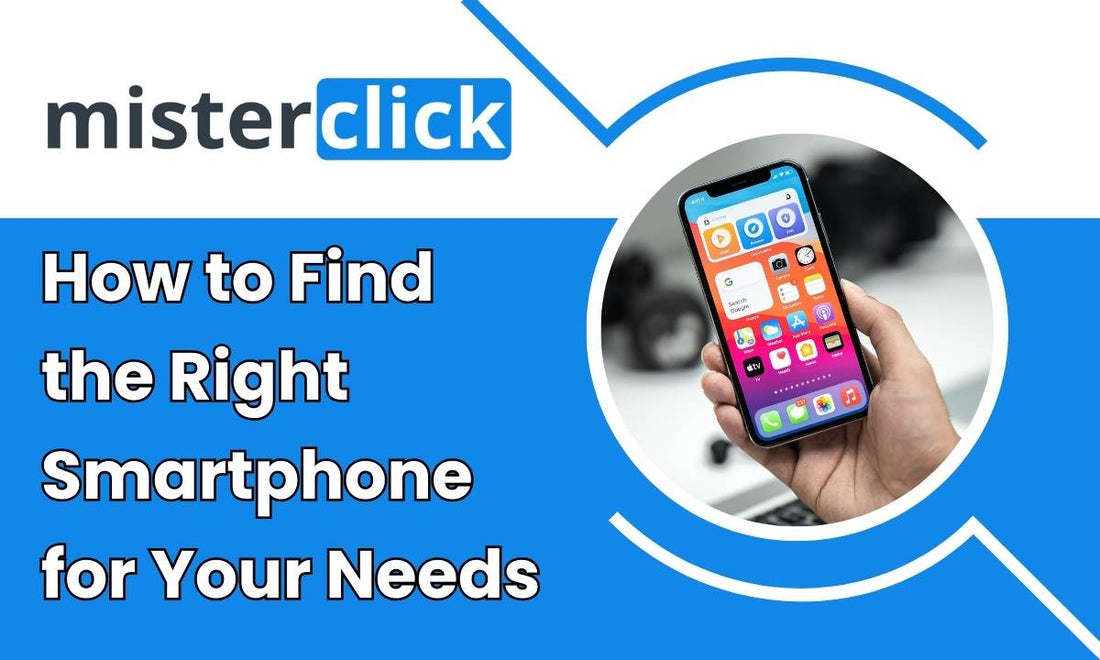Choosing a new smartphone can feel overwhelming, not because there’s a lack of choice, but because there’s so much to choose from. With dozens of models, operating systems, features, and price points, how do you pick the one that fits your lifestyle and budget?
Whether you're after a budget-friendly phone, a feature-packed flagship, or a refurbished device that offers value without compromise, this guide will help you find the perfect smartphone for your needs.
1. Understand How You Use Your Phone
The first step is figuring out what you really need your smartphone to do. Ask yourself:
-
Do you mainly use your phone for social media, messaging, and calls?
-
Are you a content creator or someone who values top-notch camera performance?
-
Do you play mobile games or stream a lot of content?
-
Is battery life or screen size your top priority?
Understanding your own habits helps you narrow down the list of smartphones that match your lifestyle — and saves you from paying for features you’ll never use.
2. Pick the Right Operating System (iOS vs Android)
One of the biggest decisions is whether to go for Apple’s iOS or Google’s Android.
-
iPhones (iOS) are known for their sleek design, smooth performance, and long-term software support. They’re ideal for users who want simplicity, strong security, and seamless integration with other Apple products.
-
Android phones offer more variety in pricing, features, and customisation. Brands like Samsung, Google Pixel, and OPPO run on Android, giving you plenty of choice if you want flexibility.
3. Consider Buying Refurbished
Want a high-performance phone at a lower cost? Refurbished smartphones are a smart choice. They’re professionally tested, repaired if needed, and offer excellent value.
You can buy refurbished Samsung, refurbished iPhones, or refurbished Google Pixel phones at a fraction of the price of new models — without compromising on functionality.
Tip: Always buy from a trusted retailer that offers warranties and quality checks.
4. Key Features to Compare
Here’s what to look for when comparing phones:
-
Display Size & Quality: Larger screens are better for media, while compact phones are easier to handle.
-
Camera Quality: If mobile photography is important to you, focus on phones with multiple lenses and features like Night Mode and 4K video.
-
Battery Life: Look for phones with at least 4,000mAh battery capacity for all-day use.
-
Storage: If you store photos, videos or games, choose 128GB or higher.
-
Processor: For gaming or multitasking, opt for newer chipsets (e.g. A15 Bionic or Snapdragon 8 Gen 2).
5. Set Your Budget
Smartphones now range from under £200 to over £1,500. Decide how much you’re willing to spend and see what features are available in that range. Budget phones have improved significantly, and many mid-range models now include premium features like high-refresh-rate displays and 5G.
6. Check Reviews and After-Sales Support
Before you commit, read user and expert reviews. Also, check if the phone brand offers regular software updates and local support. Some lesser-known brands might save you money upfront but could lack reliable after-sales service.
Final Thoughts
Finding the right smartphone doesn’t need to be complicated. By focusing on your needs, comparing key features, and deciding whether to go new or refurbished, you’ll land a phone that suits your lifestyle and your pocket.
If you're considering a certified refurbished smartphone, explore options at trusted online retailers that provide warranty-backed, thoroughly tested devices — they’re ideal if you want quality without the price tag.
FAQs
1. What should I consider before buying a new smartphone?
Think about your budget, how you use your phone (e.g. for photos, gaming, or work), the operating system (iOS or Android), and key features like battery life and storage.
2. Are refurbished smartphones reliable?
Yes, refurbished phones are thoroughly tested, repaired if necessary, and restored to good working condition. They offer great value when bought from a trusted retailer.
3. Is Android better than iOS?
It depends on personal preference. iOS offers a seamless, user-friendly experience, while Android provides more customisation and wider hardware options.
4. How much storage do I need in a smartphone?
For most users, 128GB is a good balance. If you store lots of apps, photos, or videos, consider 256GB or more — especially if the phone lacks expandable storage.
5. Where can I buy a good refurbished smartphone in Australia?
You can find quality refurbished phones online through reputable retailers that offer warranties and device certifications. Always check customer reviews and return policies.


